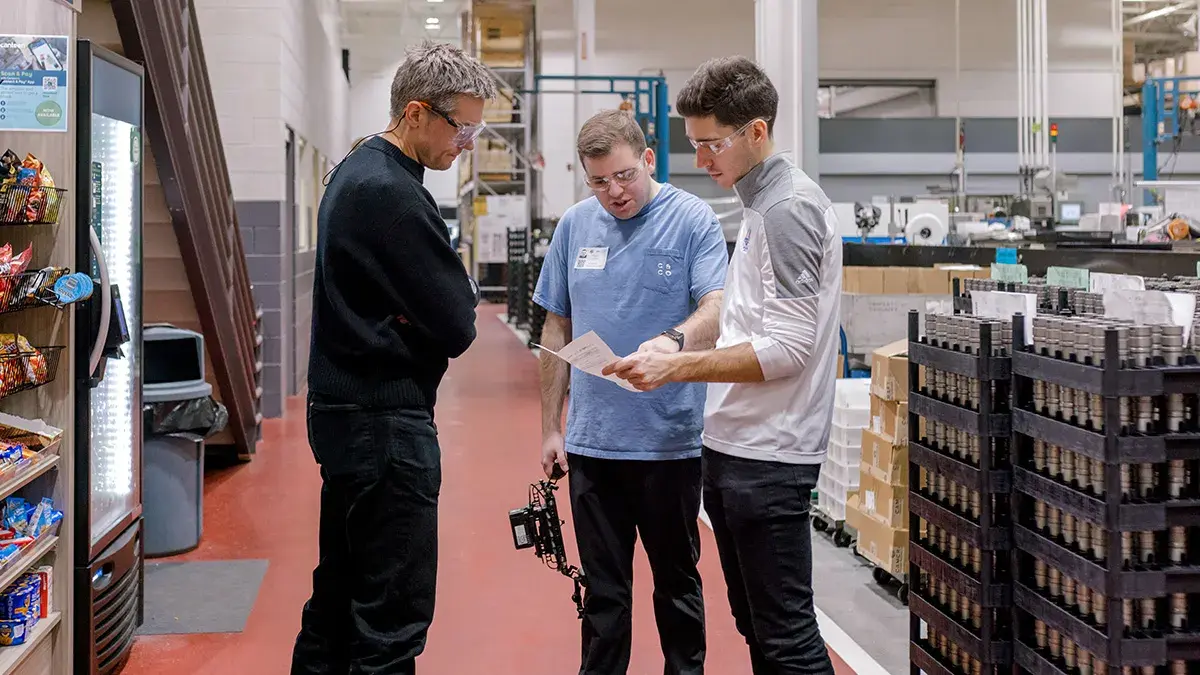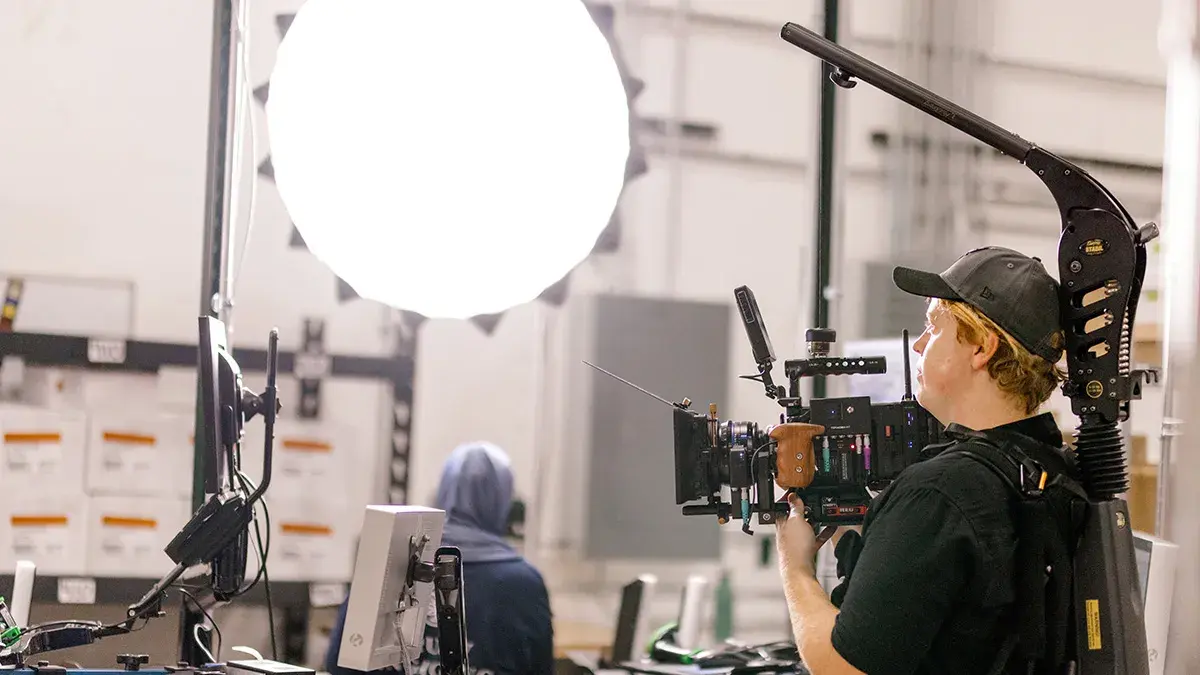What Are the Key Stages of Video Production? | A Business Guide
Business video marketing requires high-quality visuals, audio, and content to grab viewers' attention, especially if you want to leave lasting...
Everything Video Marketing→
Video marketing: What it is, why it matters, and how to do it.
Everything Video Production→
Your ultimate guide to video production: Tips and tricks for creating masterful videos.
Blog→
Helpful resources for all of your video production and marketing needs.
6 min read
Charter & Co. November 14, 2023

Video is absolutely everywhere, with a drastic increase in the amount of video content consumed these last few years. The rise in video content consumption can be directly correlated with the rise in social media use, with new platforms greatly impacting the style of content desired by consumers. For example, with the launch of YouTube, people had access to a platform where they could publish video content on their own for the first time ever. Before YouTube, all video marketing was produced by professional studios and aired on live television. In the following years, social media video production continued to grow and evolve — the next big change coming with the rise of TikTok and the short-form video.
However, not every video you see on social media followed the full video production process. The term video production suggests that a video was created with a specific set of goals in mind — one of which being the quality of the video — rather than simply something thrown together with a shaky cell phone camera.
To create high-quality videos that will help you achieve success, it’s important that you take your company goals, brand standards, and overarching marketing strategy into consideration. Without a well-rounded plan or production process, it will be difficult to keep these concepts at the forefront of your mind, and you’ll be more likely to overlook important details. To ensure you get the highest ROI on your videos, ensure you’re taking each step in the video production process seriously.
So what does video production actually look like? The process of producing a video is broken up into three key sections: pre-production, production, and post-production. Each stage is important and requires your attention to produce a quality final product that will help you achieve the results your business needs. Take a look at each step in the process and consider how you can implement these concepts into your own production schedule.
There is a lot of work that goes into a successful video before even touching a camera. It can be tempting to skip this step and jump right into production, but preparing is a necessity to ensure you can maximize your ROI. Pre-production can include:
Concepting: What types of videos do you want to produce? What purpose will they serve? Where will you share them? What is your end goal? Consider all these elements while coming up with concepts for your corporate video production.
Storyboarding: Once you have your concept in mind, you can begin planning out the video. As part of this step, you can break the video into sections or scenes and outline what you want to include during each section/scene.
Location scouting: Plan out locations for your video shoot. Do you want to record in-house, would you like to rent a studio, or maybe shoot “in the field”? Determine the setting, then coordinate with your team and anyone on-site to ensure you can use that space day-of.
Script writing: Write your script to include all the points you’d like to hit in your final product. Depending on the style of video you wish to create, the script will look a little different. The script can range from a series of questions to ask in an interview to a word-for-word script to be memorized and recited by professional actors.
Equipment purchase or rental: If you don’t already have the equipment you’ll need for your video production, you’ll need to acquire it by purchasing or renting.
The more work you put into pre-production, the smoother the actual production will be, making it easier for your video to achieve your goals.
What is the production stage, anyway? Production is when it’s time to get out on set and shoot the actual video content. Use this stage of your brand video production to find ways to really set yourself apart from the competition by selecting locations, equipment, and talent that will elevate your content to the next level.
When you’re shooting, there are two main types of video content to capture: your primary footage and B-roll. The primary footage often contains interviews or scripted dialogue. This footage will be used to compose the main story of the video. B-roll is extra content that will be used to showcase your subject or offer visual interest overtop your primary footage. Usually, this content will not contain audio, as it is intended to complement the “main” video content.
Another type of content to capture is voice-overs. You can use a voice-over with B-roll or motion graphics/animations to get your message across while offering visual interest. Voice-overs can be done on-set or in a controlled studio, and they can also be recorded in the form of an interview or simply reading information off a script. This type of content is particularly powerful when the narrator is someone with status in the industry, as this will offer a level of credibility to your video and in turn, your business.
Regardless of the content type, it’s important to shoot multiple takes to ensure you can capture each shot you need, as you can’t guarantee every take will be a winner. When shooting multiple takes, try using slightly different composition or even verbiage so you can decide which works best during post-production. By the end of production, you should have way more footage and sound than you need; enough to allow the post-production stage to produce a polished, finished video.
Post-production is the stage of corporate video production where the magic happens. This is true regardless of your subject matter. Whether you are doing social media, commercials, explainer or product video production, post-processing can bring the entire video together.
After filming during production, you’ll likely have a wide variety of video content that will feel — and look — like chaos, with a multitude of audio and video files. This step of the process turns all that content into a final product you’ll be proud to share.
Video Editing: This process involves selecting the most effective takes and footage and ordering them to tell a story; editing color, and other visual elements of the film; and creating titles, motion graphics, and slides. The primary goal of video editing is to create a polished product that keeps the viewers’ attention while also educating them on your main message.
Audio Editing: During this step, you’ll be editing and syncing audio, incorporating music and finally, mixing the audio. Audio quality is just as important as the visual elements of production. Ensure your volume levels are balanced and your video is easy to understand.
While editing for social media video production, it’s important to remember your audience and the platform you’ll be sharing your content on. Remember that the video style that is successful on YouTube is not the same as the style of successful TikTok videos. You should have determined where you’ll be sharing this content during pre-production, so the content you're working with reflects that goal, but post-production is the place you’ll have the most control over the final formatting.
Once you have a product you are happy with, you’ll begin preparing the final video files that will be distributed. Consider aspect ratio, file size, and volume levels while exporting your videos for your various marketing channels.
Whether it’s a poster, a billboard, a blog post or a video, each piece of content you put out should bring you one step closer to hitting your marketing goals. In order to achieve this, it’s important that your video production is heavily influenced by your overarching video marketing plan.
While establishing a plan for marketing video production, you’ll pinpoint your target audience, identify your goals, outline your brand standards, and establish a production and publication style. Once you understand each of these elements, it will be easier to focus on your vision and create videos that will help you achieve your goals through consistent, high-quality production. This is particularly important because everything from the type of video content all the way down to the colors, fonts, and tone you use in your videos will be dictated by your video marketing strategy. By sticking to your marketing strategy and brand standards, you can ensure consistency, meaning your content will be easily recognizable, memorable, and impactful.
Distribution, which is critically important to video marketing success, is especially dependent upon your video marketing strategy. As part of your video marketing strategy, you’ll determine which platforms you wish to utilize based on your target audience and focus on publishing and promoting the video on those platforms once created.
If you haven’t already started sharing video content, this is your sign to do so now. By creating a video marketing strategy and sticking to it, you’ll be able to establish credibility, build deeper connections with your customers, reach a wider audience, and more.
Video marketing is an essential element in any successful marketing strategy. To produce video content, you’ll need to establish a video production plan, produce video content, and implement your strategy by sharing your videos on social media, your website, and/or in paid advertising spaces online.
However, it’s important to remember that when talking about marketing video production, quality is essential. Without the proper equipment or skill set, your final product is less likely to provide you with the results you seek. While you can rent or even purchase said equipment and research how to produce videos, creating quality content also requires years of practice. Oftentimes, it’s more cost-effective and efficient to outsource production to a B2B video marketing agency. If you find yourself in this position, or you’re still wondering “What is video production?”, Charter & Co is here for you with offerings along the entire process, from establishing a video marketing strategy all the way through video production and publication.

Business video marketing requires high-quality visuals, audio, and content to grab viewers' attention, especially if you want to leave lasting...

Does Product Video Production Influence Sales? Product videos, or videos that showcase the features and specifics of your product or service, are ...

5 min read
What Is Corporate Video Production? Corporate video production can take many forms, including promotional videos, training videos, product demos...